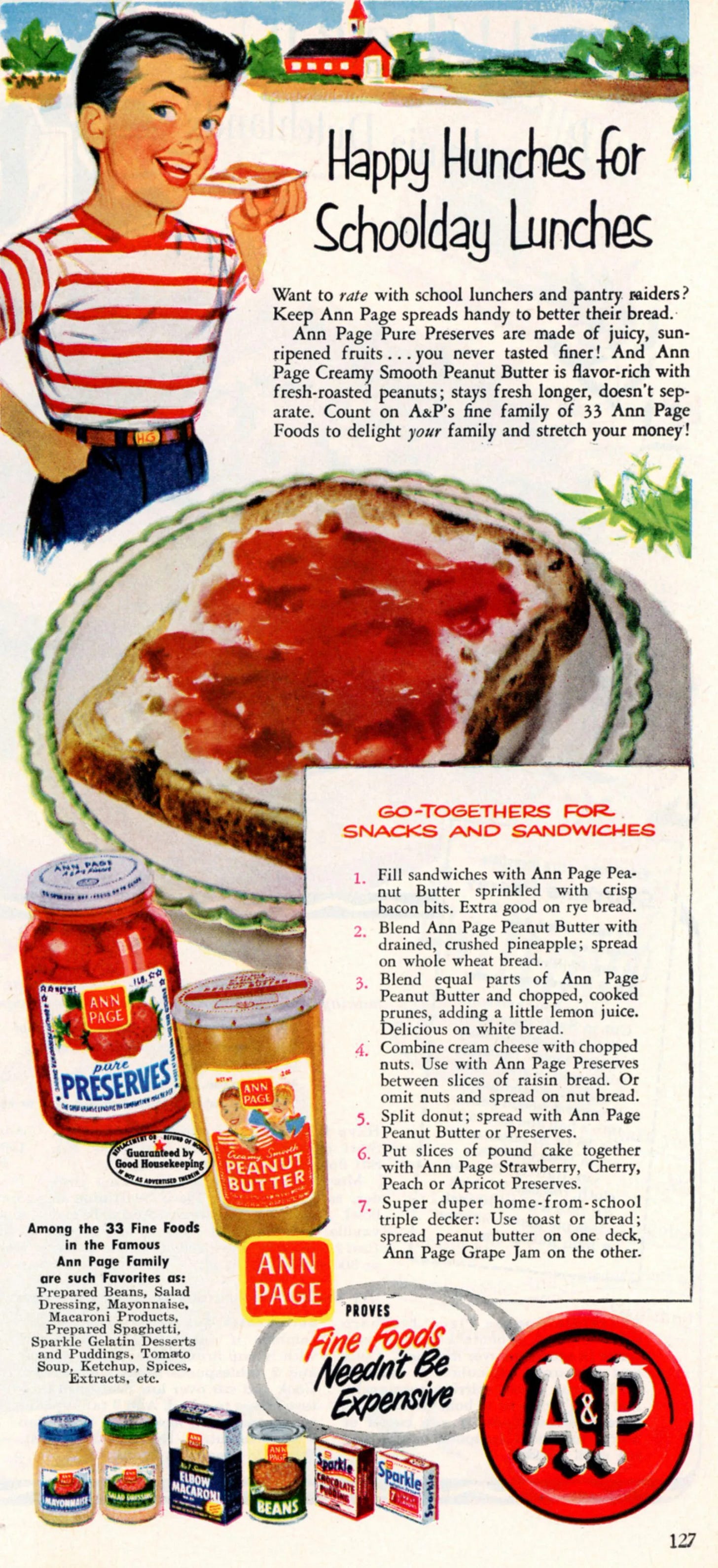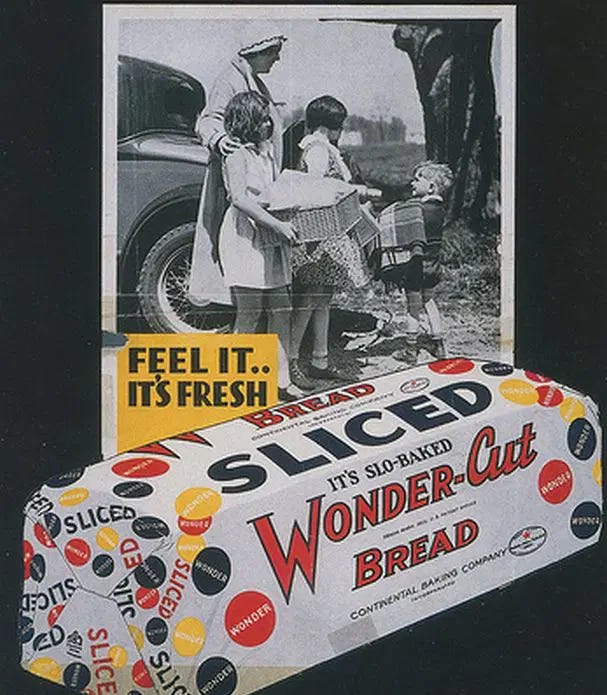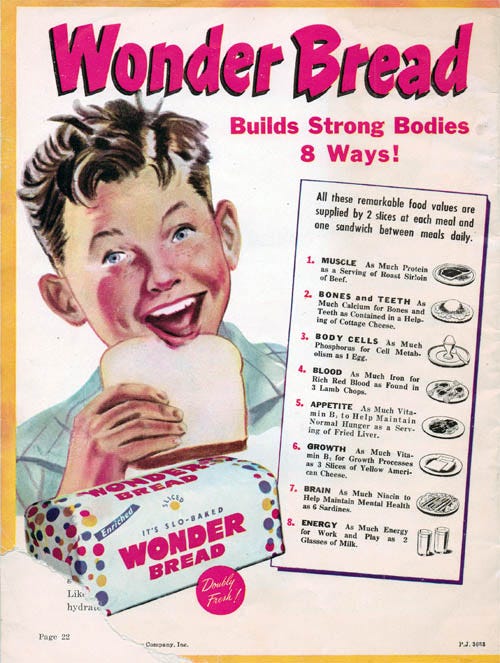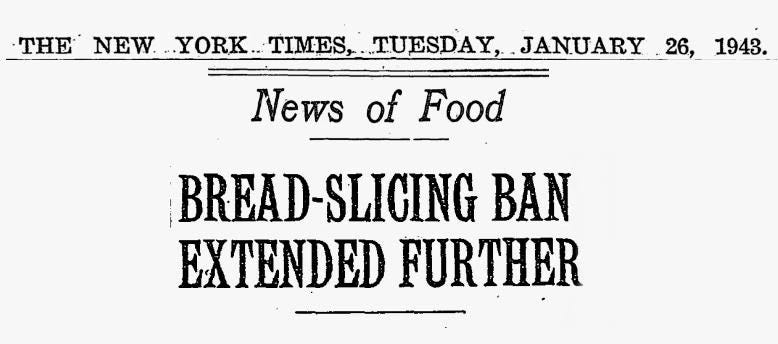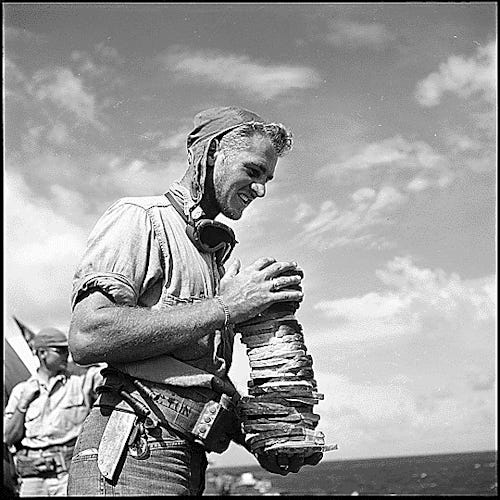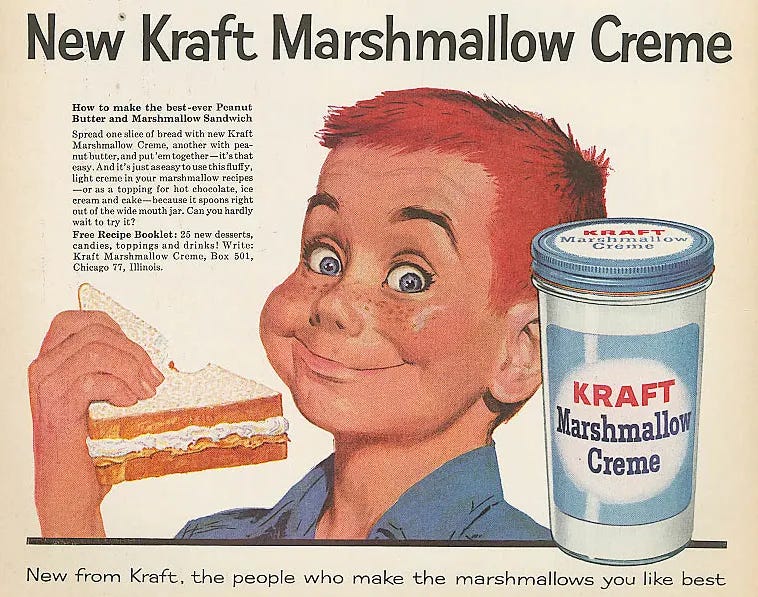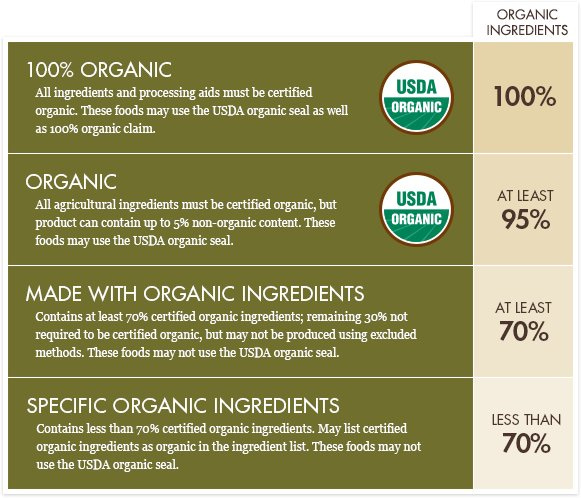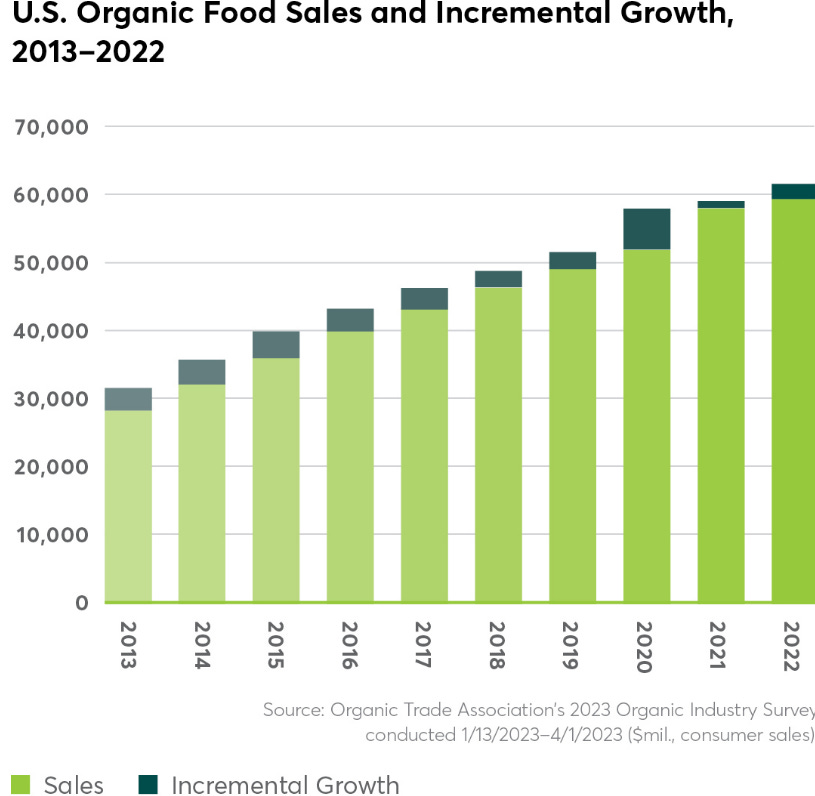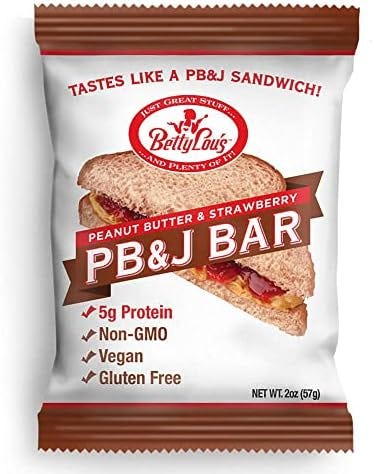(Part 1) 20th Century American History through the lens of PB&J Sandwiches
PB&Js for the wealthy, becoming an All-American staple post-WWII, ban on sliced bread, and American food trends throughout the 21st century
“As American as peanut butter and jelly” & “greatest thing since sliced bread”
PB&J sandwiches are an iconic staple of every American kid’s childhood. They are ubiquitous at soccer practices, cafeteria lunches, camping trips, and fourth of July parades. A study from 2016 estimated that the average American consumes nearly 3,000 PB&J sandwiches per year.
However, the story of how PB&J came to be is more than simple. It was a long road before PB&J sandwiches went from spa food for the upper class to becoming a staple in every kid’s lunch bag.
Tracing back to the post-WWII economic boom, PB&J became emblematic of the changing cultural and social norms seen across the U.S. The growing popularity of the PB&J sandwiches as an American staple signified several major themes of modern American history:
The growing popularity of the PB&J in the 20th century reflected changing family structures and child-rearing practices as well as the evolution of food production and consumption.
The classic PB&J bridged three divides in 20th century American society and culture, which is what ultimately made it the iconic national staple it is today:
FIRST, PB&Js connected American public and private life. The sandwich symbolized “home”, but it was just as often eaten outside of the home…SECOND, it connected parents and children across generation gaps…particularly true in the PB&J heyday from the 1950s through the 1970s, when the Baby Boom made the generation gap a chasm, increasing numbers of women entered the workforce, and rising divorce rates split nuclear families. THIRD, the PB&J was one way that Americans attempted to bridge the class divide. A relatively inexpensive and nutritious dish, the PB&J was unsurprisingly a staple of the working class and middle class. Even the children of elites relished PB&Js. Particularly during times of economic hardship, the PB&J was a staple for families of all walks of life across the country.
PB&Js became so ubiquitous that they made their way into children’s books, television shows, songs, games, and even advertising campaigns.
An All-American Love Story - How PB, Jelly, and Bread Found One Another
So how did peanut butter, jelly, and bread ultimately come to find themselves in a union under one sandwich? Let’s take a look through the century-long history in the making:
Peanut Butter for the Wealthy & the First Published PB&J Recipe
1896
There is much debate as to who actually invented peanut butter. Many credit its invention to Dr. John Harvey Kellogg (the same man responsible for Kellogg’s cereal). He was a businessman, physician, and inventor. He was also an advocate for vegetarianism and Fletcherism (practice of chewing foods thoroughly to aid digestion). He used to grind foods down to small pieces and through the grinding of peanuts created peanut butter.
Dr. Kellogg was also the director of the Battle Creek Sanitarium in Battle Creek, Michigan, a health retreat for the upper classes where peanut butter was first served. That is how peanut butter (no jelly) sandwiches were initially introduced to the upper classes, served as fancy tearoom desserts and offered at health spas / sanitariums before becoming a widely consumed staple in the decades to come.
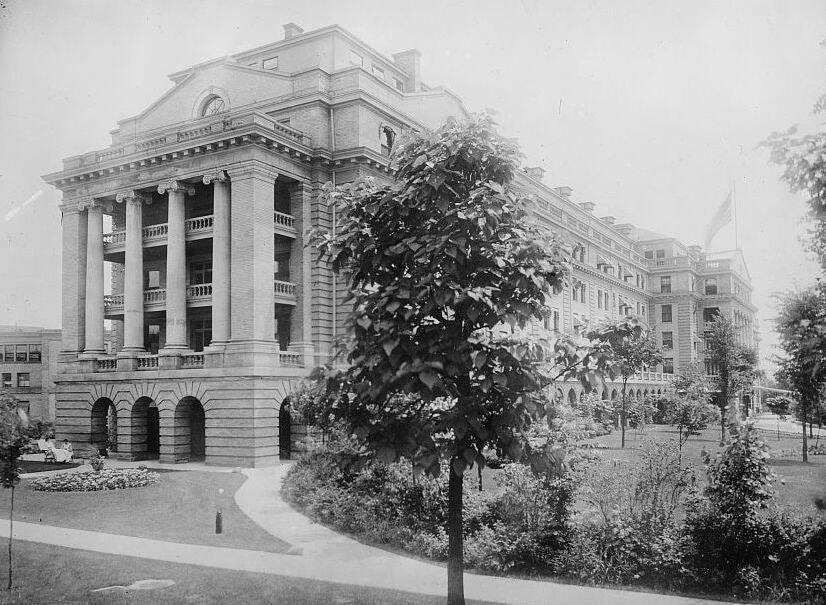
1897
Peanut butter was touted as a “miracle food” and a superior alternative to dairy butter give’s rich in protein, healthy fats, and vitamins (especially key for a period in time that was marked by food shortages).
1901
Earliest mentions of PB&J sandwiches in an article on “Peanuts and Pralines” in a Boston culinary magazine. The publication went so far as to claim that the peanut crop could surpass the cotton crop in terms of its contribution to the U.S:
Edward Atkinson estimates that soon the peanut crop will be of more value to the United States than the cotton crop.
1903
A St. Louis physician, Dr. Ambrose W. Straub, patented a “mill for grinding peanuts for butter.” This industrialization further accelerated the mainstream consumption and popularity of peanut butter.
1904
Peanut butter made its first public debuted at the St. Louis World’s Fair. In fact, this World Fair is credited with introducing the world to not only peanut butter but also iced tea, hot dogs, hamburgers…the list goes on. This was one of the first exhibitions to display mass produced food products.
1906
With mass production of consumer goods came a new problem: how do we ensure food purity, sanitation, and safety when food is produced in large quantities and not necessarily meant to be consumed on the spot?
Following continued outcry of unsanitary conditions across the country’s manufacturing plants (specifically in Chicago’s meat-packing industry) the U.S. House of Representatives passed the Pure Food & Drug Act of 1906 which banned “the manufacture, sale, or transportation of adulterated or misbranded or poisonous or deleterious foods, drugs or medicines, and liquors”.
From Food for the Upper Class to Becoming a Stable in Every Pantry
Joseph Rosefield & Otto Frederick Rohwedder’s inventions helped commercialize the PB&J sandwich and make it the All-American meal it is today. This period is also marked by continued rise in popularity of PB&J sandwiches and birth of peanut butter brands like Smucker’s and Peter Pan.
1911
Introduction of hydrogenated oils by Procter & Gamble. Hydrogenated oils are a type of processed trans fat that food manufacturers use as a preservative to keep foods fresher for longer on retail shelves.
1922
Joseph Rosefield developed the process that prevented the peanut oil from separating and going bad. He was able to stabilize peanut butter through the process of hydrogenation which made it possible to churn the peanut butter into a smooth consistency. According to his recipe, this extended the shelf-life of peanut butter for up to a year. That is how the brand Skippy later came to be in 1933.
Man cannot live by bread alone; he must have peanut butter.
James A. Garfield, 20th President of the United States
Greatest Thing Since Sliced Bread
1927
Otto Frederick Rohwedder designed the automatic bread-slicing machine which industrialized the bread baking industry. PB&J sandwiches were now incredibly convenient to make and thus consume at higher rates.
Sliced bread spread like wildfire - by 1933, nearly every bakery across the U.S. had at least one of his bread slicing machines and nearly 80% of the bread produced in America was sliced.
Bleach White Bread is the Elixir of Youth?
Wonder Bread ads touted the benefits of its white sliced bread on muscle, bones & teeth, body cells, blood, appetite, growth, brain, energy. Talk about false advertising! Seems a bit dubious that bleach-white bread is the elixir of youth…the ad industry clearly had free rein in those days.
Other ads went so far as to claim that peanut butter tastes better than candy (might be tough to convince children of that).
1929 to 1939
During the Great Depression, which lasted nearly a decade, PB&J sandwiches were a staple meal across school lunches and food aid programs (long shelf life, nutritious, high in protein, easy to make, affordable).
Government Ban on Sliced Bread
1943 (January)
In an attempt to conserve materials and resources during WWII, the Food Administration banned sliced bread because “the ready-sliced loaf must have a heavier wrapping than an unsliced one if it is not to dry out” and this meant that manufacturing sliced bread required more paper.
Homemakers were up in arms just two weeks after the ban went into effect. One woman penned a letter to the editor of the NYT, writing, “I should like to let you see how important sliced bread is to the morale and saneness of a household”.
1943 (March)
The sliced bread ban was subsequently lifted within three months because the savings were not as much as they had expected. Turns out that sliced bread doesn’t ruin the economy. In fact, it actually saves housewives’ thumbs!
1941 to 1945
PB&J sandwiches were part of soldiers’ ration kits (peanuts are highly caloric and thus an efficient source of energy and protein). PB&J sandwiches truly helped feed our soldiers and fuel them to victory.
The Army had the sandwich making process down to a science, complete with a food preparation manual that included a visual guide and step-by-step instructions.

State Senator Attempting to ban the Fluffernutter
The union between peanut butter and jelly wasn’t always so sure. Before it was peanut butter and jelly, it was peanut butter and marshmallow creme (the sandwich was aptly called the “fluffernutter”). The first known recipe was published during WWI.
Flash forward, Massachusetts senator attempts to, unsuccessfully, ban this sandwich in 2016 (read below). Who would have thought marshmallows would cause such an uproar and would be at the center of a state bill.
Post WWII Economic Boom & Selling Domesticity
1945 to 1973
Post WWII, the U.S. experienced an economic (and baby) boom, often referred to as the Golden Age of Capitalism. This period was also marked by increased consumerism and the suburban sprawl. Brands began targeting housewives, selling technological tools and inventions that promised to make their lives easier (sliced bread and washing machines among those).

1970s - 1980s
A combination of an oil crisis, market crash, and an economic recession were the beginning of the end of the expansionary period.
This was in part due to the U.S. Farm Bill (initially introduced in the 1930s) which was meant to keep the price of food reasonable for both farmers and consumers. To keep consumer prices low, manufacturers and producers had to keep their costs low. They were able to do so through ultra-processed foods that were much cheaper to make and had a much longer shelf life.
A combination of factors, which included the impact of the Farm Bill, lead to the rapid increase in childhood obesity from the 1970s on, as ultra-processed, high-sugar, and high-fat foods began to hit the shelves.
Rise of Organic Foods and Decline of PB&J Consumption
1980s
The decline of PBJs paralleled another societal and cultural shift. Growing health concerns about processed foods, hydrogenated oils, and peanut allergies led to a slowdown in PB&J consumption. Jams / jellies are also often high in sugars which increased health concerns.
A study from 1994 indicated that consuming processed trans fats from hydrogenated oils increases the risk of death from coronary heart disease. This was another marker of the relationship between food and social class across America.
Whole Foods was founded in 1980 in response to this trend. Whole Foods is known for selling products free from hydrogenated fats and artificial colors, flavors, and preservatives.
1990s
In the 1990s we also see a rise in peanut allergies among children (possibly due to overconsumption of peanuts early on in childhood or due to harmful additives). As a result, many school cafeterias banned nuts which further lead to a decline in peanut butter sales.
2000s
Conscious consumption continued to substitute convenience as availability, access, and awareness of organic and locally sourced foods increase. Consumers said good-bye (for now) to carbs and school cafeterias begin offering healthier alternatives (although still much work to be done here). Families turn to the likes of Whole Foods, Trader Joe’s, Sprouts, Costco, and Kroger to fill their shopping carts with better-for-you options.
2002
The organic farming movement dates back to the 1940s; however, the USDA did not officially approve national standards and certifications for organic food until 2002. Many brands today tout themselves as “organic” “natural” or “GMO free”. Unfortunately, many of these labels are misleading because brands use them as a marketing tool to appeal to consumers (that’s a whole other topic).
2015
The FDA ruled that partially hydrogenated oils (artificial trans fat) is not safe and that we could prevent thousands of heart attacks each year by removing it from consumer foods. In order for a spread to be called “peanut butter” it needs to contain at least 90% peanuts (the rest is trans fats) which means that more often than not consumers are not actually eating a true 100% peanut product.
2016
Recall the Fluffernutter - the original peanut sandwich before peanut butter and jelly came together? Massachusetts State Senator Jarrett Barrios attempted to ban this sandwich from his son’s school cafeteria through a junk food bill after learning that it was served on a daily basis. This was rejected and he then attempted to limit the serving of fluffernutters to just once a week. This attempt also failed.
2017 to 2020
We are now in the era where healthy and natural foods that are void of artificial flavors and are low in calories and sugar are top of mind for many consumers. In this period, we also witness the rise of alternative diets such as plant-based, dairy-free, gluten-free, sugar-free, etc. In turn, producers of peanut butters, jams, and bread respond by offering healthier alternatives with ingredients that no longer read like a laundry list. The U.S. leads in retail sales of organic foods, comprising 39% of the total share worldwide (followed by Germany, France, and China).
2020 to 2021
During the COVID lockdowns peanut butter saw a slight resurgence in demand as consumers focused on convenience / ease of preparation, affordability, shelf-stable goods, and high-protein choices (survival focused consumption). In fact, U.S. peanut butter sales jumped 75% year-over-year from 2019 to 2020.
2022 to Today
Emergence of new, elevated, and “reimagined” versions of PB&J classics that consumers have come to love and know (we’ll explore this more in Part II).
Growth has waned since COVID; however, peanut butter sales are not going to wane any time soon because of what a PB&J represents - nostalgia, comfort, and an all-American meal.
The union of peanut butter & jelly is a true American love story.
Part II…To be Continued
In Part I we explored 20th century American history through the lens of PB&J sandwiches. In Part II we will do a deep dive into the state of the 21st century consumer goods market, a mathematical formula for calculation all of the different ways you could possibly make a PB&J sandwich, and why there are seemingly so many options. Stay tuned.




